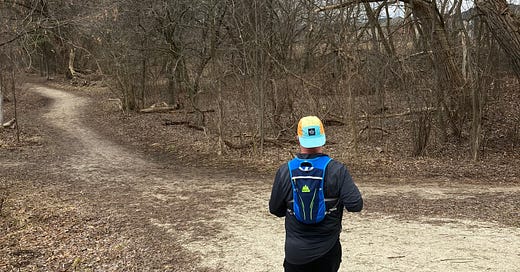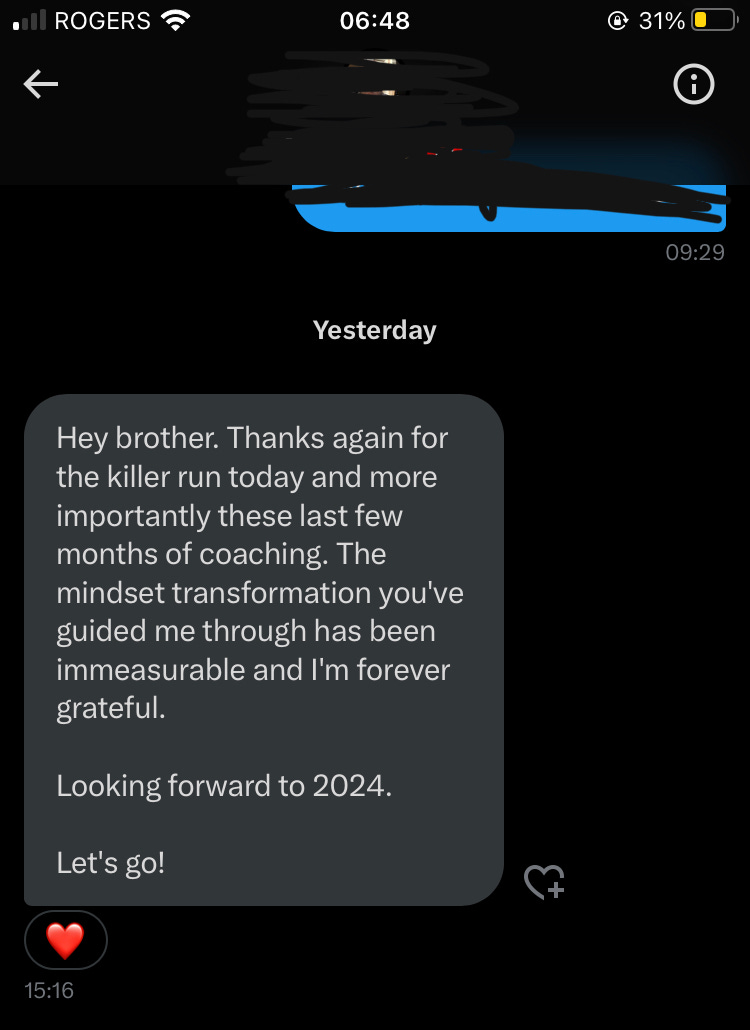13.1 is a perfect number
When it comes to sports there are thousands of important numbers.
In the world of running there are a few that stand out among the rest.
When it comes to distance running, there’s one number that stands above them all; The Half Marathon (13.1 miles / 21.1 KM)
“Hey prof, that’s a bit subjective, what’s your argument here?”
Fair, there’s a sense of arbitrariness to decalring one race distance “THE BEST”
But hear me out. When it comes to the world of self development through sport, there is no other distance like the Half-Marathon in providing harmony between challenge, discipline, exhilaration, and execution.
If you’re not a runner, a Half-Marathon might as well be 100 miles. It’s daunting and for good measure.
If you’re a runner and a good one at that, a Half-Marathon can push you to performance limits that other races cannot. It’s just long enough to pose pacing problems but not too long to limit that pace. You kind of have to burn yourself up to get anything out of it.
See this tweet from 2025 World Ironman Championship qualifier and my Tribal Training teammate and head coach
after he smashed a local Half Marathon a few weekends agoThe Half Marathon presents the perfect distance to test yourself no matter where your fitness sits.
I’m going to aim this article at the person who isn’t a runner but should absolutely take on this challenge.
It’s something I’m currently coaching one of my guys towards and I want to share our process. I’ve also coached others to take down this distance precisely because it gives us a challenge that’s manageable but also brings about the necessary process transformations in personal development; namely using the training as an anchor towards greater personal growth.
Ready? Let’s go!
Why you should sign up
A big physical challenge is the perfect way to kickstart a personal development journey.
If you feel aimless, drifting, without purpose, lacking meaning, needing a shakeup, tired of settling, demanding passion, desiring adventure, or looking to bring a better version of yourself to the surface, the pressure of a big physical effort on the horizon will provide a drastic new aim.
If you aren’t currently in running shape, a Half-Marathon will take you somewhere around 2 hours 30 minutes. That’s A LONG TIME TO RUN.
How are you going to figure out how to make that happen?
Crucially, how are you going to enjoy that process?
Instead of thinking of it as a punishment or a masochistic experiment in pain tolerance and self hated, reframe the challenge as a way to rise to the occasion.
Virtues you need to improve your life will be required to take down this challenge.
You’ll have to start consistently training, marking time on your calendar, getting rid of bad habits, removing dead time in your day, and reprioritizing your day to day actions.
You’ll have to learn to GO when you don’t want to, when you’d rather skip training, stay indoors during bad weather, feel lethargic and sore, and that flexing the ‘not quit’ muscle inside of you can be made stronger each time you show up.
You’ll have to learn pacing, nutrition, hydration, stretching, form mechanics, and this knowledge of the body will help guide you towards more healthy attitudes and behaviours.
If you take seriously the race as a crucible for life change and endeavor to make good on those gains, the race itself fades into the background.
The day to day becomes the real competition. GOOD.
That’s the why the Half-Marathon is kind. You could likely take down the distance today, right now, no matter your shape.
But in order to enjoy the process, you must begin to love the process that prepares you to reach the starting line without dread in your mind but instead gratitude on your heart and lips.
How to make it through
There are LOTS of ways to train for this. This is how I’ve advised a bunch of my clients over the past 3 years to take this down. You want at least 3 months minimum to train but you could certainly do it on less (you won’t feel great though).
It’s a general guideline on how to progress in running, prepare for the race, maintain health, but importantly utilize that training for self-development.
Step 1: Frequency beats Intensity
You need to start running more, that’s obvious. But start in a way that puts all the pressure on getting out the door, not on what happens once you’re out there.
Aim for 2-3 runs per week for the first month or two (this depends upon your race calendar and how long you have to train).
Get your body used to the mechanics of running. Let yourself adapt to the motion slowly over time.
Get your mind used to going out when it’s running time, make it a non-negotiable part of your week.
Get your spirit used to that internal battle you’re going to fight over the 13.1 miles.
Step 2: Find Enjoyment
You don’t need to become a runner to enjoy the process of training for a running race.
You may find through consistency that you actually enjoy the activity, you being to like running and start to transform yourself to becoming a runner.
But let’s be realistic, most likely you won’t have a runner’s conversion, so how do you make it fun?
This is where the aim of personal development comes in strongest.
Find enjoyment in conquering weakness.
Find enjoyment in improving your dedication and discipline.
Find enjoyment in seeing your performance increaser over time.
Find enjoyment in the person you become through the process of running.
Step 3: Build slowly, big efforts aren’t required
Would it be better to run 30-40 mile weeks and hit a few really long efforts in advance of the race. Yes.
Is it necessary to have a good race, execute a good plan, and show up to the starting line in good fitness? No.
I’m not a big believer in volume, for me frequency reigns. I’d rather see you run 3-4 times a week at low milage than 1-2 times per week going long.
I’d rather see you build slowly, creating a base, and then letting the excitement, adrenaline, and nerves take you the rest of the way on race day.
It’s important to recognize that this is a process of bringing your best self forward. Running long distances consistently isn’t necessary in that process. Running consistently, absolutely.
Think more about TIME not DISTANCE. This way your mind doesn’t worry about pacing and miles, you just go and stop when it’s time. This is how you build frequency.
Step 4: Experiment with fueling and hydrating frequently
Don’t wait until last few weeks to think about this crucial elements. Instead, use the training to get a better handle on your overall nutrition.
Think about your diet, what you feed your body, and how that impacts the way you feel exercising.
When running, take water and food on your ‘longer than usual’ efforts. Find what works for you. Get electrolytes, use them often.
This will make a big difference on how you feel over your training period and certainly during the race!
Step 5: DEFINE YOUR STYLE
Don’t feel intimidated to try something new, that works just for you.
You can absolutely take ownership over the entire process. There are a million ways to do it. That’s what great about the Half-Marathon, just long enough, not too long.
How you do it matters. Especially when it comes to having fun and enjoying the process.
Don’t think you can’t do it with a bit of creativity.
One of my guys trains walking lunges during his runs.
I had one lady simply use the training as a way to conquer a fear of the cold weather so we aimed training on the ‘worst weather’ days to help her overall process.
Another guy trained for a trail half marathon by doing TONS of hills sprints.
All of them finish, with smiles, no injuries, and a new understanding of themselves.
Sounds like winning to ME!
What you can learn
Taking on a Half Marathon will teach you about yourself.
You’ll learn about what you value in the day to day training.
You’ll learn about yourself in the hard moments you want to quit but breakthrough.
You’ll find peace with your authentic self because you’ll need that person to speak you through the hard moments.
You’ll find a sense of accomplishment and confidence in yourself in training, you keep going and aim squarely at the goal.
You’ll realize a better version of yourself at the starting line, all the hard transformative work has been done.
You’ll manifest your potential in the race, rising to the occasion.
You’ll understand that physical limits broken are truly spiritual moments of transcendence.
You’ll begin to know yourself more deeply than ever.
That’s why you should train for and run a Half Marathon.
You’ve got it all inside you already.
Now you have permission and a loose frame on how to GO!
If you want more specific guidance on how to use this training for personal growth while also getting good training advice and programming send me a message and let’s get to work training together!







We are extreme alignment on this!!! Great post!!